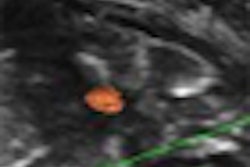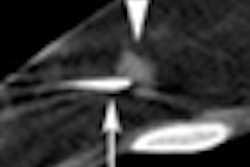
The University of California, San Francisco (UCSF) researchers who authored this week's JAMA editorial on screening have disregarded the facts regarding the value of screening mammography, according to Dr. Daniel Kopans, professor of radiology at Harvard Medical School and senior radiologist in the Breast Imaging Division at Massachusetts General Hospital, both in Boston. Dr. Kopans shares his views on the editorial in this Second Opinion.
The group at UCSF completely ignores the fact that mammography screening began in the mid 1980s in the U.S., and, as a consequence, the death rate from breast cancer has decreased by almost 30% since 1990 -- after being unchanged for the 50 years prior to 1990.
These researchers seem not to understand the difference between prevalence cancers and incidence cancers. They suggest that the incidence of invasive breast cancers has not changed when, in fact, there has been a big drop in invasive breast cancers in the U.S. The drop has been, unscientifically, attributed to the decrease in hormone use among women; however, because the decrease in invasive cancers began several years before hormone use was reduced, the decrease in incidence is more likely due to the removal of early ductal carcinoma in situ lesions due to mammography screening.
It's a mistake to group prostate and breast cancer together. Prostate cancer begins to strike men who are more than 10 years older than the age at which breast cancer begins to strike women. The most rigorous studies (randomized, controlled trials) have clearly shown that mammography screening decreases deaths, whereas there have been no randomized, controlled trials of prostate screening. When mammography screening is introduced for the general population, the death rate from breast cancer decreases.
No responsible organization or individual has ever said that mammography screening will save every woman from breast cancer, but thousands of lives can be saved. Screening is unlikely to detect fast growing, aggressive cancers early enough to save the individual, but moderate and slower growing cancers (the majority of breast cancers) can be lethal if not detected early enough to prevent metastatic spread. Finding these cancers can save lives.
It is no surprise that there are breast cancers that do not kill. Even before there was any screening or effective treatment for breast cancer, not all women died from their cancers. There is no question that research is needed (and is ongoing) to try to determine which cancers have lethal potential and which do not, but we are still unable to do this with 100% accuracy.
This is not a good reason to dissuade women from a test that could save their lives. There are pneumonias that are very aggressive and defy antibiotic treatment. We do not withhold antibiotics because some pneumonia will not respond.
Mammography screening is not perfect, but a decrease in deaths of 30% is a huge improvement, and most of this is due to mammography screening. Women should be encouraged to participate in screening while we work hard to address the issue of whom to treat and how best to treat them.
By Dr. Daniel B. Kopans
AuntMinnie.com contributing writer
October 22, 2009
Dr. Daniel Kopans is a senior radiologist in the Breast Imaging Division at Massachusetts General Hospital. He is also a professor of radiology at Harvard Medical School, also in Boston.
The opinions expressed in guest editorials are those of the author and do not necessarily reflect the views of AuntMinnie.com.
Related Reading
JAMA editorial raises questions about breast, prostate screening, October 21, 2009
'Spontaneous regression' debate erupts anew at ASCO symposium, October 12, 2009
Most breast cancer deaths seen in nonscreened women, October 7, 2009
Study traces steady declines in U.S. cancer deaths, August 13, 2009
Living near mammography unit may improve outcomes, August 3, 2009
Copyright © 2009 AuntMinnie.com



















